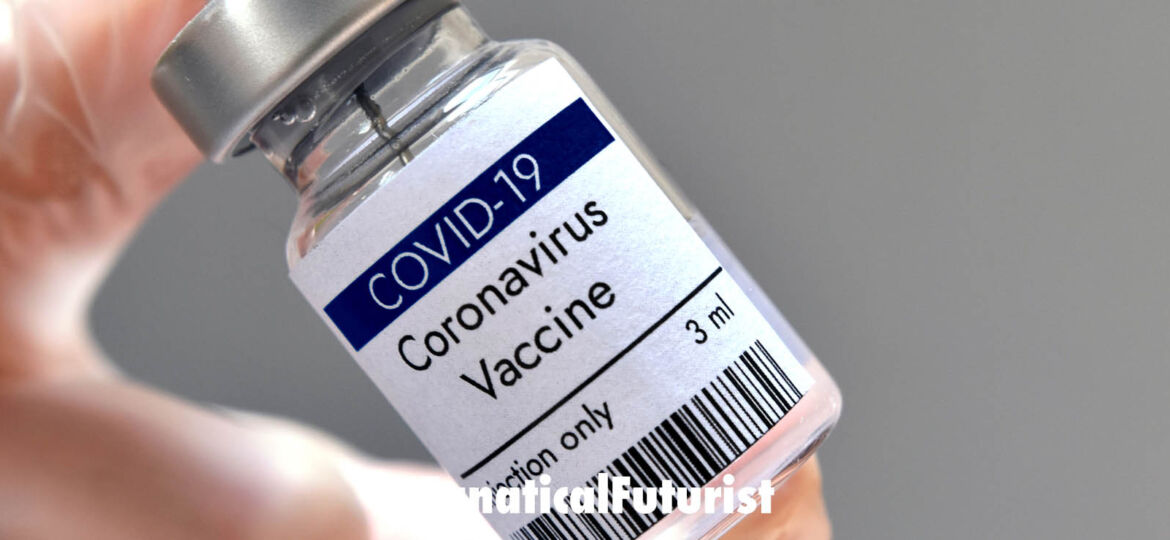
WHY THIS MATTERS IN BRIEF
A Covid-19 vaccine will hopefully get the world back to work, but the speed it’s been created at is the real revolution.
 Love the Exponential Future? Join our XPotential Community, future proof yourself with courses from XPotential University, connect, watch a keynote, or browse my blog.
Love the Exponential Future? Join our XPotential Community, future proof yourself with courses from XPotential University, connect, watch a keynote, or browse my blog.
Normally vaccines take anywhere between five and ten years to produce, but given this years COVID-19 pandemic, a sense of urgency, and the combination of human ingenuity and increasingly advanced exponential technologies like Artificial Intelligence (AI), genetic engineering, and powerful supercomputers, have, for the very first time, mean that the world has managed to create working vaccines within a period of just ten months. And that’s a staggering testament to the art of the possible when it comes to what we can achieve when we all put our minds to it.
This week AstraZeneca and the University of Oxford presented the first interim data from their Phase 3 COVID-19 vaccine trial. The vaccine is safe, up to 90 percent effective, and significantly cheaper and easier to distribute compared to other options like Pfizer’s and Moderna’s COVID-19 vaccines that require complex cold storage and which are up to five times more expensive to buy at $20 per dose. But plenty of questions still remain unanswered.
This interim announcement details efficacy results from more than 11,000 participants across the UK and Brazil arms of Oxford’s large international Phase 3 trial. Based on 131 confirmed COVID-19 cases in the cohort, the report claims the vaccine has an overall efficacy rate of just over 70 percent.
However, the trial is apparently testing two separate dosing regimes: two high doses administered one month apart, or a half dose followed by a full dose one month later. The double high dose cohort showed only 62 percent efficacy while the tiered dosing regime unexpectedly delivered 92 percent efficacy.
No serious adverse effects were reported in either dosing arm. Plus, there were no severe COVID-19 cases reported in the vaccinated cohort.
Unlike both the Pfizer and Moderna vaccine trials, Oxford says some subjects in the trial were regularly tested for asymptomatic infection. Promisingly, the findings claim no asymptomatic cases were detected in the vaccinated cohort. Without full trial data available it is difficult to judge how meaningful this finding actually is but if it holds true then it is extraordinarily important in showing the vaccine may effectively prevent infection, as opposed to merely reducing the severity of the disease.
Eleanor Riley, from the University of Edinburgh, calls this particular finding “excellent news.” She suggests the ability to track asymptomatic infections offers valuable insights into how the vaccine may disrupt viral transmission.
“If the vaccine reduces transmission – i.e. vaccinated individuals have fewer asymptomatic infections, or their viral load is lower if they are infected, or if they shed virus for a shorter period of time – the vaccine could make an important contribution to herd immunity,” says Riley.
Perhaps the most curious part of the interim data announcement is the discordancy in efficacy between the two dosing regimes. In a press briefing Andrew Pollard, the director of the Oxford Vaccine Group, said this finding was unexpected and at this stage the researchers can only hypothesize as to the reason for this difference.
“I think all of us expected that the two high doses would be the best response,” says Pollard. ”We think that by giving a smaller first dose, that we’re priming the immune system differently. We’re setting it up better to respond.”
One crucial factor that sets the Oxford vaccine apart from both Moderna and Pfizer’s vaccines is it can be easily stored and transported in normal refrigerated conditions of 2 to 8 °C (36 to 46 °F). Richard Hatchett, CEO of the non-profit vaccine development foundation CEPI, says this will allow the vaccine to be affordably delivered to more remote or lower-income countries that could struggle with ultra-cold chain distribution.
“AstraZeneca and Oxford have developed an affordable, scalable vaccine that crucially can be stored and shipped in a regular refrigerator,” says Hatchett. “This makes it appropriate for use and easy to deliver almost anywhere in the world, including in low-resource settings. That means that this vaccine will make an important contribution to controlling the pandemic globally.”
While the previously announced Moderna and Pfizer vaccines are based on novel mRNA technology, the Oxford vaccine works a little differently, relying on a weakened adenovirus as its delivery mechanism. The adenovirus has been engineered to display the same spike protein SARS-CoV-2 uses to infect cells. This strategy is designed to train the immune system to recognize a key feature of the novel coronavirus.
It is important to note, all of these recent vaccine trial announcements came solely via press release. So, until full data is released and we have peer-reviewed analyses, there will be lots of questions that remain unanswered. The AstraZeneca-Oxford trial is ongoing with 24,000 participants currently enrolled. The goal is to reach 60,000 by the end of the year.
Sources: Oxford, AstraZeneca

















[…] global pandemic has seen an unprecedented rise in the number of people who are interested in the latest vaccine developments and news. But, unsurprisingly, they’ve all been interested in knowing one thing – when the […]